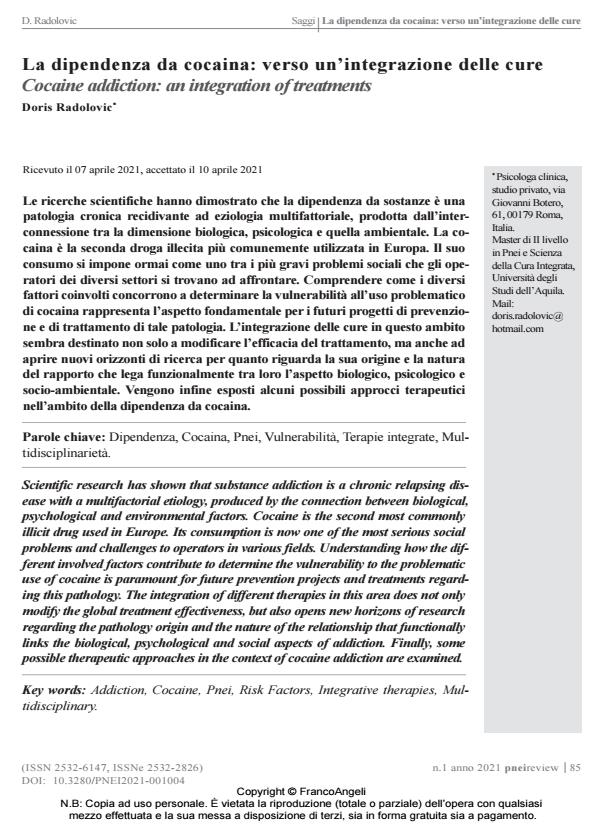Cocaine addiction: an integration of treatments
Journal title PNEI REVIEW
Author/s Doris Radolovic
Publishing Year 2021 Issue 2021/1
Language Italian Pages 13 P. 85-97 File size 1083 KB
DOI 10.3280/PNEI2021-001004
DOI is like a bar code for intellectual property: to have more infomation
click here
Below, you can see the article first page
If you want to buy this article in PDF format, you can do it, following the instructions to buy download credits

FrancoAngeli is member of Publishers International Linking Association, Inc (PILA), a not-for-profit association which run the CrossRef service enabling links to and from online scholarly content.
Scientific research has shown that substance addiction is a chronic relapsing disease with a multifactorial etiology, produced by the connection between biological, psychological and environmental factors. Cocaine is the second most commonly illicit drug used in Europe. Its consumption is now one of the most serious social problems and challenges to operators in various fields. Understanding how the different involved factors contribute to determine the vulnerability to the problematic use of cocaine is paramount for future prevention projects and treatments regarding this pathology. The integration of different therapies in this area does not only modify the global treatment effectiveness, but also opens new horizons of research regarding the pathology origin and the nature of the relationship that functionally links the biological, psychological and social aspects of addiction. Finally, some possible therapeutic approaches in the context of cocaine addiction are examined.
Keywords: Addiction, Cocaine, Pnei, Risk Factors, Integrative therapies, Multidisciplinary
Doris Radolovic, La dipendenza da cocaina: verso un’integrazione delle cure in "PNEI REVIEW" 1/2021, pp 85-97, DOI: 10.3280/PNEI2021-001004